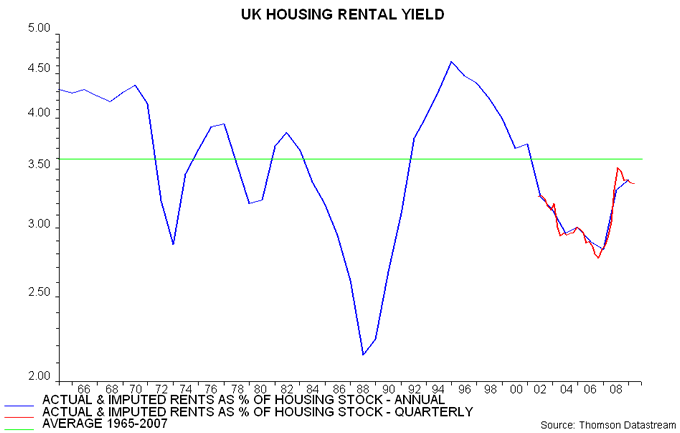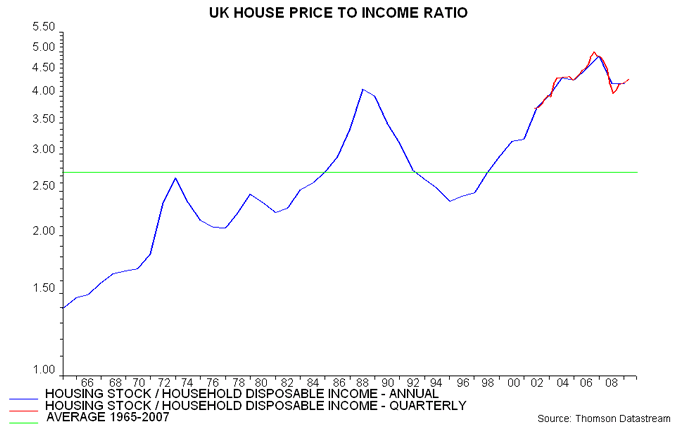UK house prices 6% overvalued, down from peak 30%, based on rents
UK house prices are 6% overvalued, based on a comparison of the national rental yield with its historical average.
The national rental yield is derived from national accounts data by dividing the sum of actual rental payments and imputed rents of owner-occupiers by the value of the housing stock – see first chart. The yield averaged 3.6% between 1965 and 2007. (The low value partly reflects the inclusion of subsidised social housing and vacant properties.)
The house price boom pushed the rental yield below 2.8% in the third quarter of 2007, suggesting that prices were overvalued by 30%, based on the 3.6% long-run average. Current prices are 5% lower, according to the index published by the Department of Communities and Local Government, while national accounts rents have risen by 18%. The resulting 3.4% yield implies overvaluation of 6%.
Housing market bears compare house prices with earnings rather than rents. The ratio of the value of the housing stock to household disposable income is 59% above its long-run average – second chart. This average, however, is a misleading guide to "fair value" because the ratio has trended higher over time, reflecting factors such as improving quality, the pressure of an expanding population on constrained supply and a high income elasticity of demand for housing.
The national rental yield, by contrast, has fluctuated around a stable long-run level. Rents already incorporate fundamental influences on housing demand and supply. People need to live somewhere – the choice is between buying your own home or renting, not between spending money on housing or retaining income for other purposes.
The current 6% overvaluation does not imply that house prices will fall, for two reasons. First, the deviation can be corrected by rising rents – up by 7% in the year to the first quarter. Secondly, a below-average rental yield may be sustainable as long as nominal and real interest rates remain low, limiting forced selling.
(This is a follow-up to a note in May 2009, which suggested that house prices were bottoming because the rental yield had returned to its long-run average.)


Reader Comments